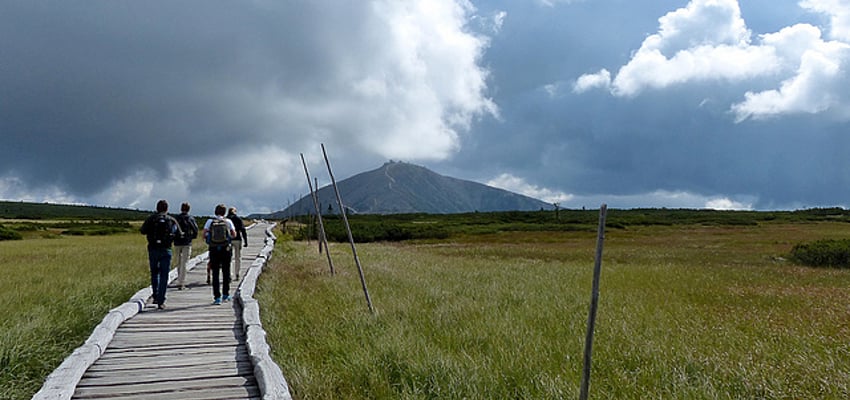


The Czech Republic extends over a relatively small but quite varied territory, between Poland, Germany, Austria and Slovakia. From the valleys of the north, with its majestic cities like Prague, to its southern mountains dotted with vineyards of Moravia, the Czech Republic has much to offer the tourist.
With no access to the sea, the landscapes of the Czech Republic stretch between medium-altitude mountains and valleys crossed by four main rivers. The geography of the country is split into three major regions: Bohemia, Moravia and Silesia.
Bohemia is the western part of the Czech Republic. Surrounding Prague, it is easily explored by train or road and includes many interesting, medium-sized cities such as Pilsen, Hradec Králové, České Budějovice and Litoměřice. The region extends through the hilly plateaus bordering the banks of the Vltava River (pronounced "Veltava"), which waters the capital, and those of the Elbe (the Labe in Czech).
The continental climate of the country gives it hot summers, icy winters and the constant rainfall that is favourable to the hop growing that predominates in the area. To the south and west, Bohemia is dominated by the low mountains which delimit its borders.

The Sudeten range to the west forms the border with Poland and culminates with the Giant Mountains, which peak at 1602 metres at the top of the Sniejka or Sněžka. To the south, the Bohemian Forest delimits the border between the basins of the Elbe and the Danube, on the Austrian side.
Another mountain range, the mountains of Bohemia Moravia, forms the border with the second main region of the Czech Republic, making the country a paradise for hikers. Moravia extends through the eastern part of the country between the pre-Carpathian Mountains to the east, also called the Little Carpathians, and the Vienna basin to the south.
Less rainy, the climate is a little cooler than that of Bohemia due to its altitude, making it favourable to wine-growing. Two major rivers wind through Moravia and shape its geography: the Oder (Odra in Czech), which has its source in Sudetenland, and the Morava, one of the tributaries of the Danube.
The capital of the region and second city of the Czech Republic, Brno, is located to the south of Moravia like many UNESCO world heritage sites, including Kroměříž castle or the Moravian Karstnatural park, which houses many caves and the picturesque site of the famous Macocha Gorge.
More historical and cultural that truly geographical, Silesia is sometimes not taken into account in the geographic breakdown of the Czech Republic. To the north-east of Moravia, the region also largely extends into Poland, as well as into Germany to a lesser extent. Its historic capital and main city is Opava. The long presence of a German population and its disputed history make it a fascinating area for lovers of European history, but it certainly not lacking in breathtaking landscapes either.